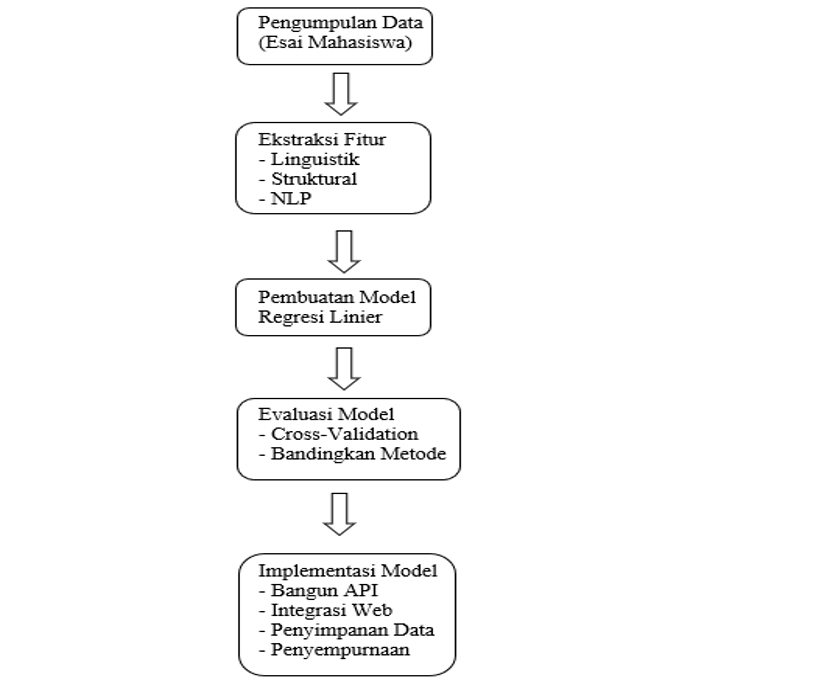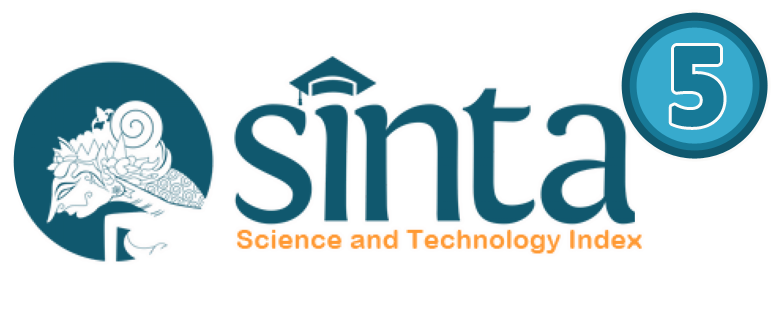PENILAIAN ESAI MATA KULIAH BAHASA INGGRIS BERBASIS MACHINE LEARNING MENGGUNAKAN ALGORITMA REGRESI LINIER
DOI:
https://doi.org/10.31949/infotech.v11i1.13014Abstract
Manual essay assessment is time-consuming and subjective. This study proposes an automated evaluation system using a linear regression algorithm to improve efficiency and objectivity. The model analyzes linguistic and structural features such as word count, sentence length, word complexity, and grammatical patterns. The dataset consists of student essay scored by tutors as training references. Natural Language Processing (NLP) techniques are applied to extract linguistic features and map reference scores using linear regression. The system helps instructors provide more consistent and efficient feedback while reducing subjectivity in grading. Additionally, this approach enhances assessment scalability, making it applicable to large numbers of essays. However, the model has limitations, particularly in understanding deep contextual meaning, creativity, and argument coherence. Future improvements may integrate advanced NLP models to enhance comprehension. Despite its limitations, this system presents a valuable step toward automated essay assessment in education
Keywords:
Essay , Machine , Linear , LanguageDownloads
References
Attali, Y., & Burstein, J. (2006). Automated essay scoring with e-rater® V.2. Journal of Technology, Learning, and Assessment, 4(3), 1-30.
Dikli, S. (2006). An overview of automated scoring of essays. The Journal of Technology, Learning, and Assessment, 5(1), 1-35.
Hearst, M. (2000). The debate on automated essay grading. IEEE Intelligent Systems, 15(5), 22-37.
Landauer, T. K., Laham, D., & Foltz, P. W. (2003). Automated scoring and annotation of essays with the Intelligent Essay Assessor. Assessment in Education: Principles, Policy & Practice, 10(3), 295-308.
Page, E. B. (2003). Project essay grade: PEG. Automated essay scoring: A cross-disciplinary perspective, 43-54.
Rudner, L. M., & Liang, T. (2002). Automated essay scoring using Bayes' theorem. The Journal of Technology, Learning, and Assessment, 1(2), 3-21.
Shermis, M. D., & Burstein, J. (2013). Handbook of automated essay evaluation: Current applications and new directions. Routledge.

Published
How to Cite
Issue
Section
License
Copyright (c) 2025 Cahyadi, Dwi Purnomo, Dewi Sahara Nasution, fitri anggraini

This work is licensed under a Creative Commons Attribution-ShareAlike 4.0 International License.








